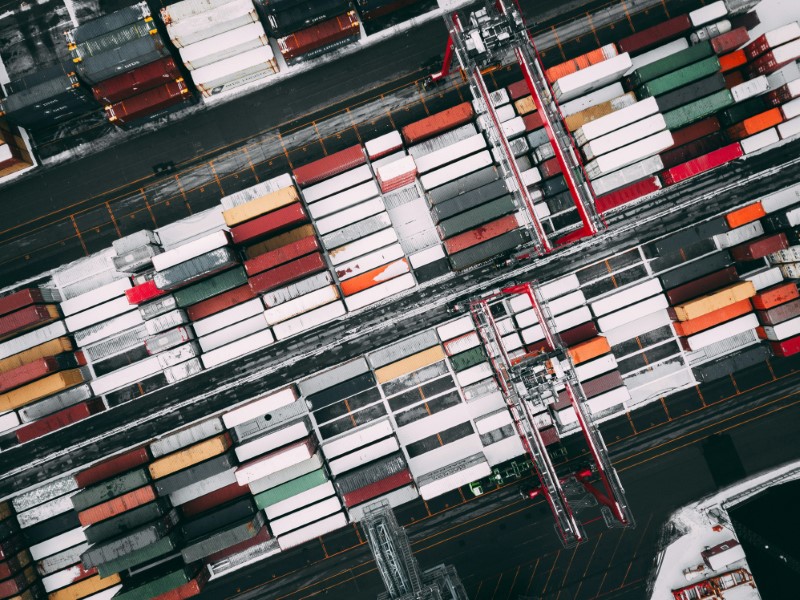Among the various barcode types, the SCC 14 (Shipping Container Code 14) is indispensable for businesses dealing with large-scale shipments. This guide discovers the intricacies of SCC 14 barcodes, their structure, applications, and how you can easily generate them for your business.
What is SCC 14?
SCC 14 is a 14-digit barcode used primarily on outer shipping containers, such as cartons or pallets, to identify the contents within. It is part of the GS1 system, a globally recognized standard for supply chain management. The SCC 14 barcode encodes a Global Trade Item Number (GTIN), providing a unique identifier for products during transit.

Barcode Type of SCC 14
ITF-14 is a specific barcode format designed for encoding the 14-digit Global Trade Item Number (GTIN) used in SCC 14.
The "ITF" stands for "Interleaved 2 of 5," which is the symbology used to encode the data. ITF-14 barcodes are commonly used on packaging and shipping containers to identify products at higher levels of packaging, such as cartons or pallets.
Key Characteristics of ITF-14:
● Thick Border: ITF-14 barcodes are typically enclosed in a thick black border, known as the "bearer bar." This border helps to prevent misreads by ensuring that the scanner captures the entire barcode.
● Encoding: ITF-14 uses the Interleaved 2 of 5 symbology, which encodes data in pairs of digits.
ITF-14 is specifically used for outer packaging, such as corrugated boxes, and is well-suited for environments where barcodes need to be printed directly on cardboard or other rough surfaces.
Applications of SCC 14 Barcodes
1. Logistics and Supply Chain Management
SCC 14 barcodes are widely used in tracking large shipments, such as pallets and cartons, across different stages of the supply chain. By scanning these barcodes, companies can monitor the movement of goods from the warehouse to the final destination, ensuring accuracy and efficiency.
For example, a beverage company ships cases of bottled water to retailers. Each pallet is labeled with an SCC 14 barcode, allowing warehouse staff to quickly scan and verify the shipment during loading, transit, and delivery, reducing the risk of errors and delays.
2. Retail Inventory Management
Retailers use SCC 14 barcodes to manage bulk inventory. These barcodes help in organizing stock levels and streamlining the restocking process by identifying and tracking large quantities of products at once.
A supermarket receives a shipment of canned goods. The outer carton is labeled with an SCC 14 barcode. By scanning this barcode, the inventory system automatically updates stock levels, making it easier to manage and reorder products efficiently.

How to Generate SCC 14 Barcodes?
Step 1: Understand the Structure of SCC 14
Before generating an SCC 14 barcode, it's essential to have a clear understanding of its structure:
● Indicator Digit: The first digit (0-9) identifies the packaging level. For example, a "1" might indicate a case or box, while a "0" could be used for individual items.
● GS1 Company Prefix: This is a unique number assigned to your company by GS1, typically ranging from 6 to 10 digits.
● Item Reference: This part, combined with the GS1 Company Prefix, uniquely identifies the product within your company.
● Check Digit: The last digit is a checksum, calculated to ensure the barcode is correctly composed.
Step 2: Calculate the Check Digit
The check digit is crucial for the accuracy of your barcode. It is calculated using the modulo-10 algorithm. Here's how to compute it:
● Starting from the right, assign alternating weights of 3 and 1 to each digit of the 13-digit number (excluding the check digit).
● Multiply each digit by its corresponding weight.
● Sum all the products.
● Find the remainder when this sum is divided by 10.
● Subtract the remainder from 10 to get the check digit. If the remainder is 0, the check digit is 0.
For example, if your 13-digit number is 0123456789012:
Multiply the digits alternately by 3 and 1, starting from the right.
Sum the results.
Subtract the remainder from 10 to find the check digit.
Step 3: Choose the Right Barcode Symbology (ITF-14)
SCC 14 barcodes are generated using the ITF-14 symbology. ITF-14 is a variation of the Interleaved 2 of 5 (ITF) barcode format, optimized for encoding 14-digit numbers. This format is chosen for its reliability and ease of scanning on rough or corrugated surfaces, typical of shipping containers.
When generating an ITF-14 barcode:
● Ensure that the barcode has a bearer bar (a thick border around the barcode) to prevent misreads.
● The barcode should be large enough to be scanned easily, but not so large that it takes up unnecessary space on the packaging.
Step 4: Input Data into Barcode Software
Once you have your 14-digit number and have calculated the check digit, input this information into barcode generation software. Ensure that the software supports ITF-14 symbology and allows for the customization of bearer bars.
When entering the data:
● Double-check the GS1 Company Prefix and Item Reference for accuracy.
● Ensure that the check digit is correctly placed at the end of the number.
● Select ITF-14 as the symbology to generate the barcode in the appropriate format.
Step 5: Print the Barcode
After generating the barcode, it's time to print it. Here are some best practices to ensure the barcode is scannable:
● High-Quality Printing: Use a high-quality barcode printer that can produce crisp, clear barcodes. Avoid ink smudging, as this can lead to scanning errors.
● Appropriate Sizing: Ensure that the barcode is large enough to be easily scanned but not oversized for the packaging.
● Positioning: Place the barcode in a flat, unobstructed area of the packaging. The barcode should be accessible and visible to scanners during logistics operations.
Step 6: Test the Barcode
Before applying the barcode to all your shipping containers, it's critical to test it:
● Use a Barcode Scanner: Scan the barcode with a standard barcode scanner to ensure it reads correctly and consistently.
● Check for Errors: Verify that the scanned data matches the original 14-digit number, including the correct check digit.
● Assess Scan Quality: Test the barcode in different environments (e.g., in low light, on a conveyor belt) to ensure it remains scannable under various conditions.
Step 7: Apply the Barcode to Your Shipping Containers
Once your barcode passes all tests, you can confidently apply it to your shipping containers. Ensure that each container is labeled with the correct SCC 14 barcode to maintain consistency throughout your supply chain.
To wrap up, SCC barcodes are a critical tool for businesses that manage large shipments and need to maintain accurate inventory tracking.
By understanding the structure and applications of SCC 14 barcodes, you can enhance your logistics and supply chain processes. Moreover, using an SCC 14 barcode generator simplifies the creation process, ensuring that your barcodes are accurate and compliant with global standards.
To generate your barcodes, try our free online barcode generator. It's designed to help you create precise and reliable barcodes that meet your business needs.





